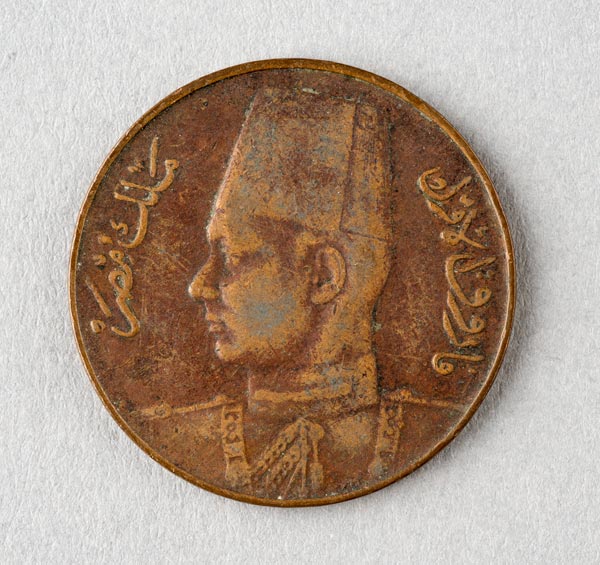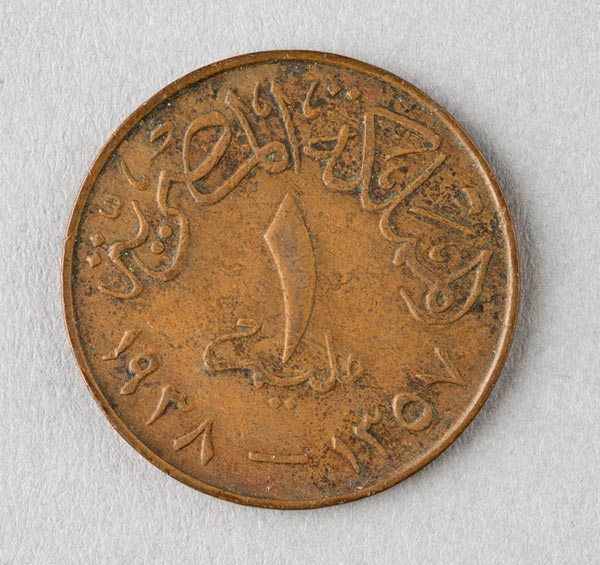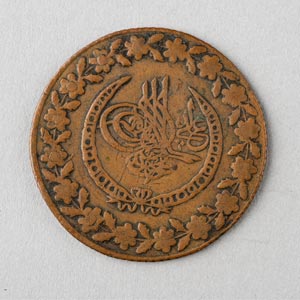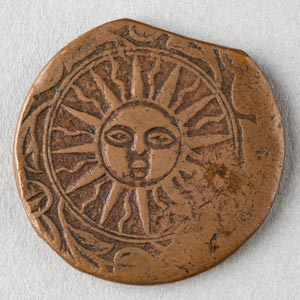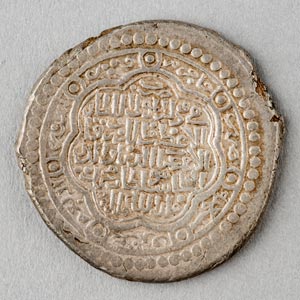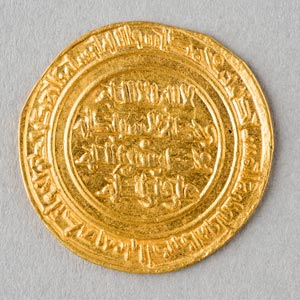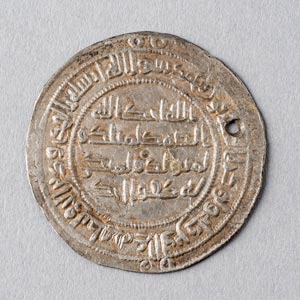Coin with Bust Portrait of King Faruk I
The Show

Coin with bust portrait of King Faruk I AH 1357/1938 CE, Egypt Bronze Kelsey Museum of Archaeology, 75794
Donning a fez, King Faruk I (ruled 1936–1952) is depicted in sharp profile on this Egyptian bronze coin. Figural representation in coins was not unknown in the Islamic world prior to the 20th century. However, this coin's use of the bust profile and its inclusion of a Gregorian date (1938) on its reverse clearly follow contemporary European numismatic trends. The ways in which a Muslim ruler could declare his authority via coinage varied over the centuries. The earliest Islamic coins tend to proclaim rulership epigraphically, but even texts can be arranged into visual forms. Such is the case for the Ottoman imperial emblem, or tuğra. Additionally, some modern Persian dynasts experimented with solar imagery and heraldic devices. This coin, however, reproduces solely the ruler's visage in a manner similar to coins that are in circulation today.
Bibliography: Wasserstein 1993; Heidemann 2010; Bates 1982, 46–61; Bates and Darley-Doran 1985, 393–395; and Nicol, al-Nabarawy, and Bacharach 1982, 208 and fig. 6238 (for a 1927 commemorative medal of King Farouk I).
Return to the Show